Development of an Action Guide for People with Disabilities During Emergencies
Almaty is one of the seismic zones of the world, with a constant threat of a destructive earthquake. During an earthquake, residents of the city are often overwhelmed with panic, which can be attributed to a lack of awareness about the rules of conduct in such situations.
The safety of people in seismically active areas depends not only on the effectiveness of emergency response services but also on the overall level of seismic literacy and preparedness of the population.
Currently, the existing action guides and instructions for emergencies typically do not take into account the specific needs of people with disabilities. However, this category of residents is the most vulnerable in the event of an emergency.
Figure 1. Screenshot from the official website of the Almaty Department of Emergency Situations
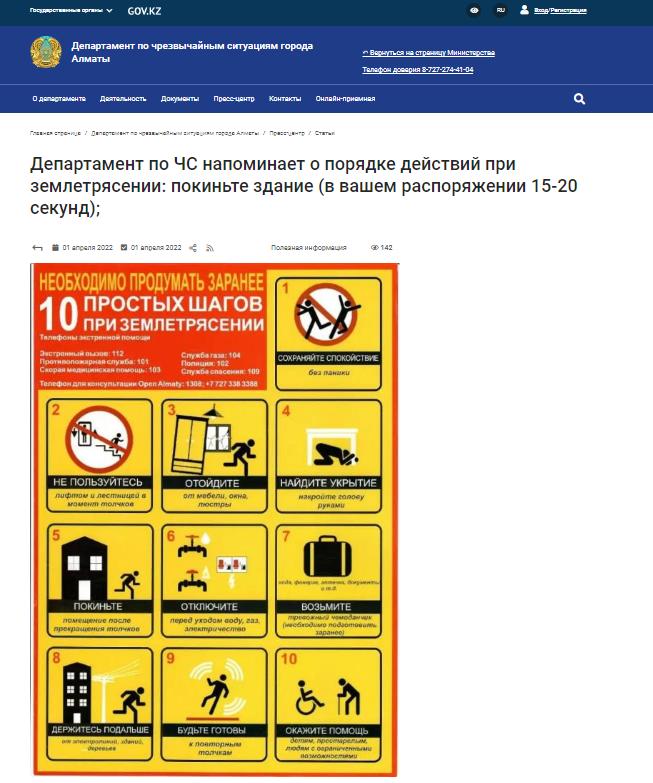
In addition, at a meeting organized by the «Kedergisiz KZ» Disability Society, within the framework of the project «Development of Inclusive Strategies for Emergencies Caused by Climate Change Considering the Needs of People with Disabilities,» issues of lack of information about actions during emergencies were raised.
Participants of the meeting, who use wheelchairs and live on high floors of multi-story buildings, shared their experiences during the strong earthquake in Almaty on the night of January 22-23 (6.7 on the Richter scale).
The participants expressed absolute unpreparedness for emergencies – there was no understanding of how to act in such situations and where to seek help, especially for those living alone. This example is indicative and reflects the real situation and the position of people with disabilities in the event of an emergency.
The main problems are:
-
Lack of information about the specific needs of people with disabilities in emergency action guides;
-
Lack of instructions and recommendations on actions during emergencies for this category of residents;
-
Insufficient accessibility of information about shelters, evacuation points, and assistance for people with special needs.
In this regard, the first step should be educating people with disabilities about actions during emergencies. The most popular and simple way is the development and placement of guides on city websites.
As an example, the guide posted on the Earthquake Country Alliance website1 (the guide is available in Russian, Figure 2). It is important to note that this guide is very general and does not cover the entire action plan during emergencies.
Additionally, the information available on the official website of the U.S. Department of Homeland Security2 – a bulletin on actions during earthquakes for people with disabilities (Appendix 1) can be considered as an example.
Figure 2. Guide on the Earthquake Country Alliance website
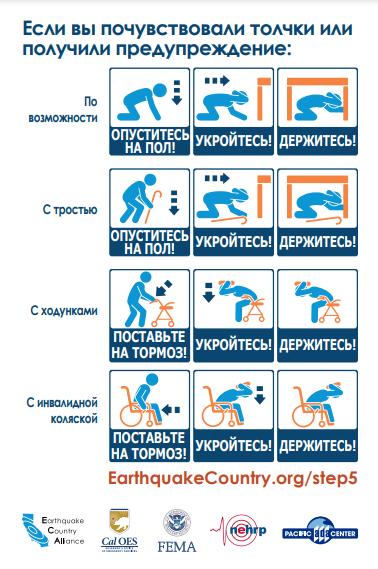
The development of the guide should include the following stages:
-
Analysis of the needs of people with disabilities and the problems they may face during emergencies.
-
Consultations with disability public organizations and emergency experts.
-
Formation of recommendations – the information in the guide should be presented in an accessible form, for example, using clear and understandable illustrations, large fonts for people with limited vision, etc.
-
Testing and feedback – the guide should be tested on groups of people with disabilities, and feedback should be collected to ensure its effectiveness and usefulness.
-
Distribution and training: – after the guide is developed, activities should be organized to disseminate the information and educate people with disabilities and their caregivers on how to use the guide.
Thus, the development of an emergency action guide for people with disabilities requires a comprehensive approach that takes into account the specifics of disabilities, the nature of emergencies, and the needs of the target audience.
This is presented as a proposal.
Appendix 1
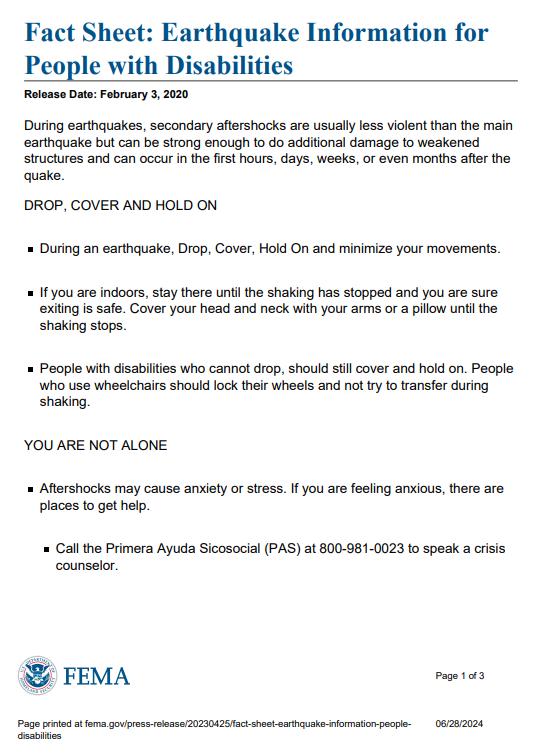
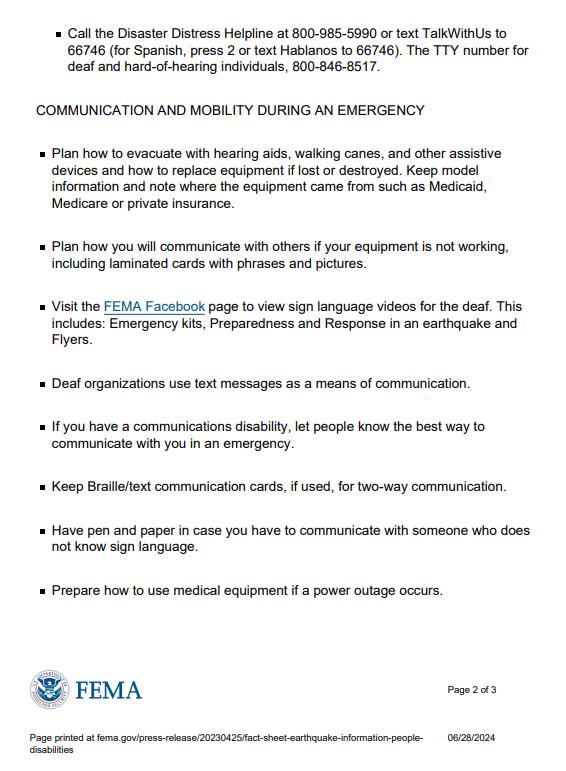
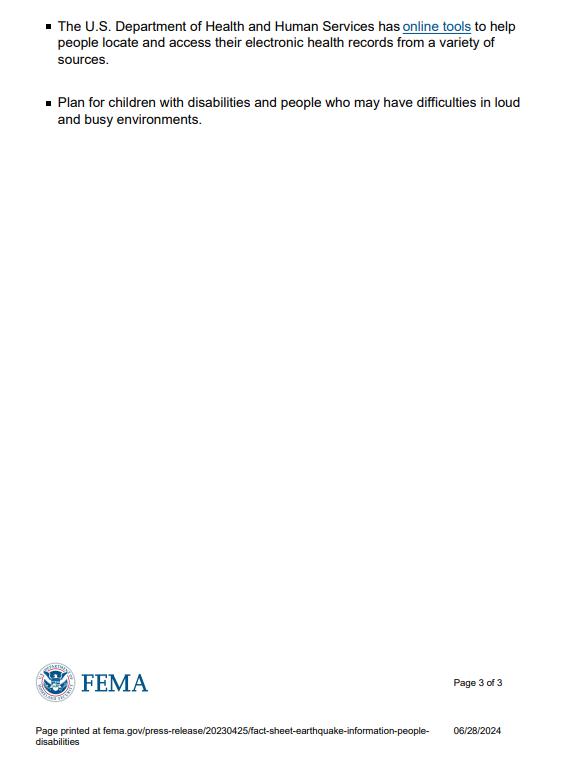
1 https://www.earthquakecountry.org/












